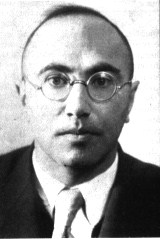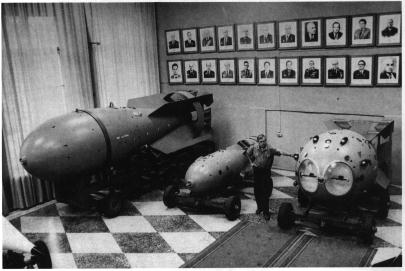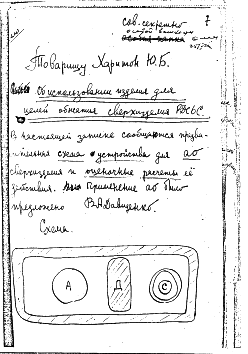 Yakov
Borisovich Zel'dovich was born in Minsk, Belarus on 8 March 1914. At age 17 he
began working as a laboratory assistant at the Institute of Physics, the
Institute of Chemical Physics, in Leningrad. Zel'dovich was almost entirely
self-taught, eventually reaching the level of Academician (the highest rank in
Soviet academia) and later becoming professor at Moscow State University without
ever received a regular college degree.
Yakov
Borisovich Zel'dovich was born in Minsk, Belarus on 8 March 1914. At age 17 he
began working as a laboratory assistant at the Institute of Physics, the
Institute of Chemical Physics, in Leningrad. Zel'dovich was almost entirely
self-taught, eventually reaching the level of Academician (the highest rank in
Soviet academia) and later becoming professor at Moscow State University without
ever received a regular college degree.
Zel'dovich had a remarkably versatile intellect, and during his life explored and made major contributions to a wide range of scientific endeavors. During the 1940s he advanced the state of the science of combustion and detonation. He developed a more sophisticated theory of detonation that accounted for features not previously explained, and correctly predicted features that had not yet been observed. The modern theory of detonation accordingly is called ZND theory (Zel'dovich-von Neumann-Dohring). In a series of seminal papers written in collaboration with Yuli Khariton in 1939-40, he explored the basic principles of fission chain reactions in both fast and moderated assemblies.

Zel'dovich became the first head of the theoretical department of
Arzamas-16, the "Soviet Los Alamos", in 1946. That same year he
developed a report with Isaak Gurevich, Isaak Pomeranchuk, and Khariton on the
feasibility of releasing energy through nuclear fusion triggered by an atomic
explosion and presented it to Igor Kurchatov. This report was published in 1991
in Uspekhi Fizicheskikh Nauk. under the title "Ispol'zovanie iadernoi
energii legkikh elementov" ("Utilization of the nuclear energy of
light elements"). [VG comment – this report essentially gave a recipe of
hydrogen bomb].
Zel'dovich led the theoretical work on both the first Soviet
atomic and hydrogen bombs.
 The first
conceptual breakthrough came sometime in late 1953. This breakthrough is
apparently attributable to Davidenko. Left is a January 1954 sketch by
Zel'dovich and Sakharov, addressed to Yuli Khariton, that shows a transitional
concept for the hydrogen bomb. The concept shown is equivalent to Stanislaw
Ulam's breakthrough of separate staging, using an atomic trigger to compress the
thermonuclear secondary. Like Ulam's initial concept, it is based on
hydrodynamic compression rather than radiation implosion.
The first
conceptual breakthrough came sometime in late 1953. This breakthrough is
apparently attributable to Davidenko. Left is a January 1954 sketch by
Zel'dovich and Sakharov, addressed to Yuli Khariton, that shows a transitional
concept for the hydrogen bomb. The concept shown is equivalent to Stanislaw
Ulam's breakthrough of separate staging, using an atomic trigger to compress the
thermonuclear secondary. Like Ulam's initial concept, it is based on
hydrodynamic compression rather than radiation implosion.
In the course of his work on nuclear weapons, Zel'dovich did
ground-breaking work in radiation hydrodynamics, and the physics of matter at
high pressure. This research served as the basis for his collaboration with Yuli
P. Raizer in writing Physics of Shock Waves and High-Temperature Hydrodynamic
Phenomena, a marvelously lucid physics text and by far the best text on
radiation hydrodynamics available. Originally published in English in 1966 by
Academic Press, it is now (2002) available in a low cost paper back reprint from
Dover.
